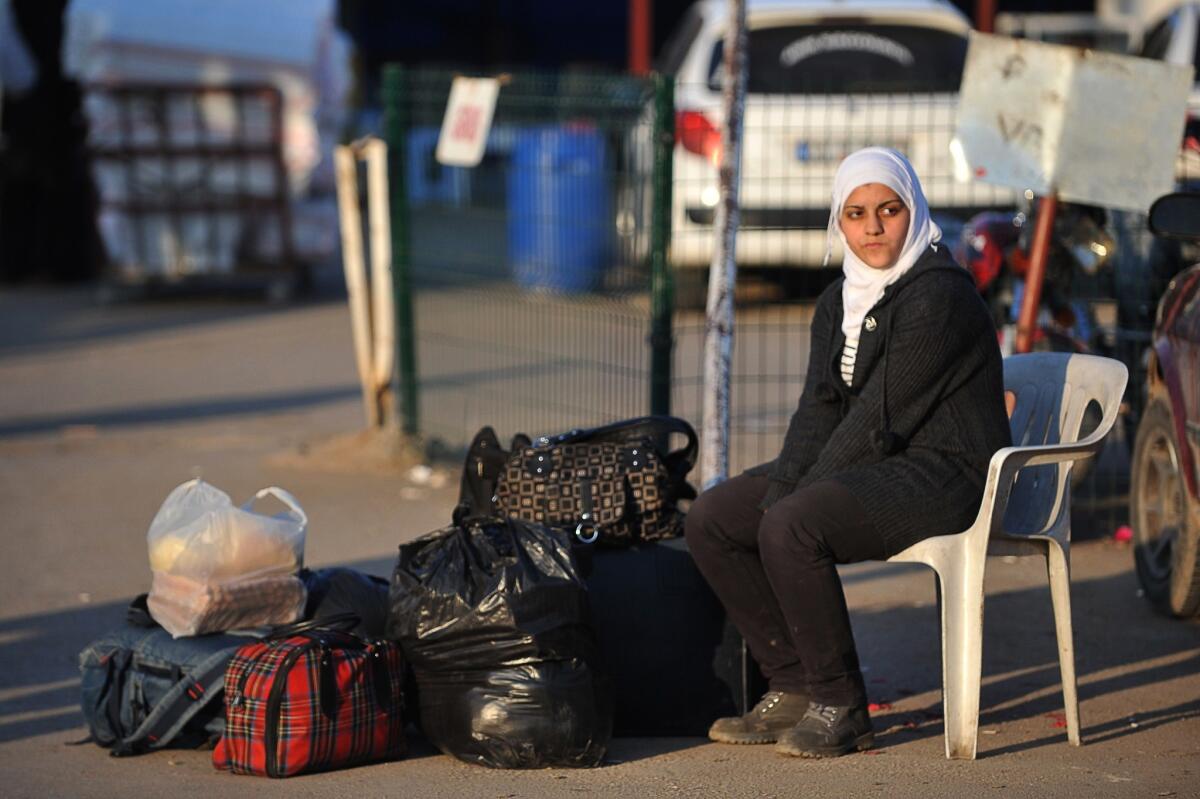Trump’s refugee limits betray past Republican presidents and the founders

- Share via
Top aides to President Trump, according to White House leaks, are urging him to limit or even eliminate refugee admissions to the United States. The administration has already severely reduced America’s refugee program, especially in comparison with the Obama years. In fact, Trump has admitted far fewer refugees than any Republican president in the almost 40 years since the Refugee Act of 1980 was enacted. Further cuts would betray a humanitarian tradition older than the nation. They would also be irrational and self-defeating.
From the arrival of the Pilgrims in 1620, America has been a haven for people fleeing persecution and hopelessness. In 1965, Congress created the modern system of immigration law, ending almost half a century of explicit ethnically discriminatory exclusion. The new law also limited refugee admissions largely to those fleeing communist-dominated countries — a Cold War reflex that ended in 1980 when the much more evenhanded Refugee Act passed (unanimously in the Senate). The act defined refugees as people outside their home countries who would face persecution based on “race, religion, nationality, political opinion, or membership in a particular social group” if they were to return home.
The Refugee Act created two distinct remedies for such persecution — one for those making claims as asylees, the other for refugees proper. The differences are crucial. Asylees, or asylum seekers, are already at our border or inside the country (often illegally) when applying; refugees are abroad when they make their claims and during the vetting process by Homeland Security officials.
Asylees who meet the persecution criteria will almost certainly be admitted without limit — the law sets no numerical limits — if an administrative judge determines their claims are valid. For refugees, a rigid quota caps the number that is admitted annually. The cap is set through a mandated consultation process involving the president and congressional committees. (The consultation for next year’s cap has just begun.)
The refugee program’s numerical limits and methodical screening of claimants overseas (it often takes years and is aided by organizations such as religious groups) together assure a relatively controlled, rational and deliberative application process. Asylum decisions, which are initially conducted under severe time and caseload constraints, are much more prone to erroneous inclusion or exclusion. That is especially true now at the border with Mexico, amid mass detentions, legal challenges and political pressures.
These procedural differences explain why reducing refugee quotas, as Trump wants to do, would in no way mitigate the border crisis. That crisis is caused by a huge backlog of asylum applicants, most with weak claims, who are entitled to due process safeguards and must either be detained or released pending their hearings. If released, they may simply melt into the population and never have their claims tested.
The wholly discretionary nature of refugee admissions not only cuts down on errors, it also provides a flexible instrument enabling the U.S. to protect at-risk foreigners who have aided our soldiers, intelligence operations and diplomats abroad, often at grave risk to themselves and their families. These kinds of admissions explain why many top military, national security and foreign policy leaders (former Defense Secretary James N. Mattis, most recently) express alarm at the administration’s eagerness to curtail the program.
Indeed, the reductions Trump has already put in place have taken a huge toll on refugee admissions. As recently as 2016, the United States resettled almost 100,000 refugees. The number admitted fluctuates, but under Presidents Reagan,George H.W. Bush and George W. Bush (except for a time after the Sept. 11 attacks) and Obama, the U.S. has led the world in refugee admissions. Political turbulence abroad and the growing number of anti-democratic regimes taking power in the last few years have pushed the world’s refugee numbers to nearly 26 million, the highest levels since World War II, and this doesn’t include the 41.3 million internally displaced people and 3.5 million asylum seekers. Yet last year, the U.S. resettled just 23,000 refugees. For the first time, we accepted fewer than Canada, which took in 28,000, despite our population being 10 times larger. This is shameful.
Today’s spasm of global displacement and repression demands more, not fewer, refugee admissions. If after the consultation with congressional committees mandated by the Refugee Act, Trump cuts the cap further, Congress should pass a resolution demanding a higher number proportionate to the scale of the current refugee crisis. The president has the upper hand on this issue because of his constitutional powers over foreign affairs and his leading role as spelled out in the act, but Congress should muster whatever influence it can in this compelling cause.
Peter Schuck is an emeritus professor at Yale Law School and scholar in residence at New York University. His latest book is “One Nation Undecided: Clear Thinking About Five Hard Issues That Divide Us.”
More to Read
A cure for the common opinion
Get thought-provoking perspectives with our weekly newsletter.
You may occasionally receive promotional content from the Los Angeles Times.









